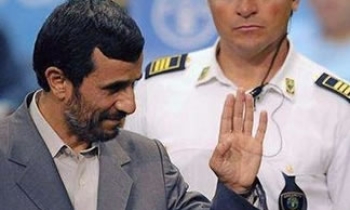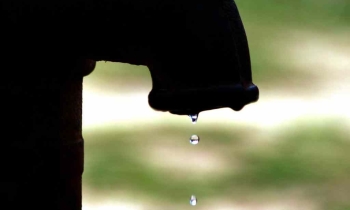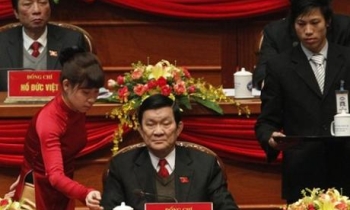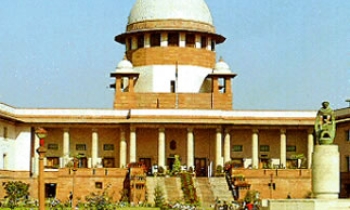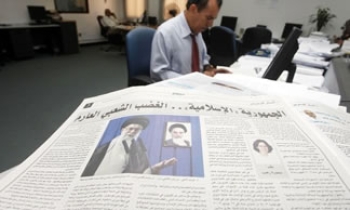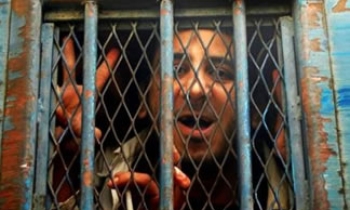Over 1,000 news media personnel around the world have been killed trying to report the news in the past decade, with Iraq and Russia topping the list as the deadliest countries for the profession, according to a report released Tuesday. India stands sixth.

The victims, overwhelmingly men, were more likely to be shot and killed while investigating local issues than while reporting from the battlefield, according to the report Killing the Messenger by the Brussels-based International News Safety Institute (INSI), a coalition of international news media organisations and human rights groups. The vast majority of those killed were on staff — 91 per cent versus 9 per cent freelance.
In most cases, the killers were never identified or punished, according to INSI, which spent two years tracking the statistics. Only one in eight deaths resulted in prosecution.
Only one in four journalists died in war and other armed conflicts. In war, it was much safer to be embedded with an army than not — independent news reporters accounted for 92 per cent of the dead. Overall, armed forces — regular or irregular — police and officials accounted for 22 per cent of killings.
“In many countries, murder has become the easiest, cheapest and most effective way of silencing troublesome reporting, and the more the killers get away with it the more the spiral of death is forced upwards,” said Rodney Pinder, Director of INSI. “Most of those killed were murdered because of their jobs; eliminated by hostile authorities or criminals as they tried to shine light into the darkest corners of their societies,” he said.
The Top 21 bloodiest countries over the past 10 years have been Iraq (138), Russia (88), Colombia (72), Philippines (55), Iran (54), India (45), Algeria (32), the former republic of Yugoslavia (32), Mexico (31), Pakistan (29), Brazil (27), USA (21), Bangladesh (19), Ukraine (17), Nigeria, Peru, Sierra Leone & Sri Lanka (16), Afghanistan, Indonesia & Thailand (13). Iran's figures were swollen by one air accident in December 2005. A military aircraft carrying news teams to cover exercises in the Gulf crashed in Tehran, killing 48 journalists and media technicians aboard.

The news media death toll has increased steadily since 2000. The last full year covered by the report, 2005, was a record with 147 dead. It has since emerged that 2006 was even worse, with 167 fatalities, according to INSI’s annual tally.
INSI was invited to undertake this inquiry by press freedom and media support groups at a meeting in Geneva in 2004 called to discuss the rising news media death toll around the world. It formed an international Committee of Inquiry, comprising news organisations, individual journalists, journalist support groups, and international legal experts.
The team conducted a series of interviews with affected journalist and support staff in critical areas and compiled a database containing details of the deaths of journalists and media workers in violent circumstances which goes back 10 years to 1996. The database includes details for 1,000 individuals of 101 nationalities, who died in 96 countries.
INSI's researchers counted all news media personnel — journalists as well as support workers such as drivers, translators and office personnel, whether staff or freelance — provided they died because of their work gathering or distributing the news. All causes of death were included, from murder through accidents to health-related.
No one central authority records the deaths of news media staff on a regular basis. The main journalist support groups that regularly monitor casualties include the International Federation of Journalists (IFJ), the Committee to Protect Journalists (CPJ), the International Press Institute (IPI), the World Association of Newspapers (WAN), Reporters sans Frontières (RSF), and INSI. Their recording methods differ.
“This report breaks new ground in capturing how dangerous the pursuit of news has become,” said Tom Curley, President and CEO of the Associated Press (AP). “It confirms how insignificant the efforts have been to achieve justice for journalists who are harmed or persecuted as they work to keep the world informed. We are at a perilous point in journalism: fair and accurate coverage is more necessary than ever but the risks to those who pursue it are greater than ever, too.”

IFJ President Christopher Warren described it as a “wake-up call” to the industry and the international political community, and added, “This report confirms the shocking reality that journalists and the people who work with them are at risk today more than ever before. We must do more to find and prosecute the killers and we must act together to reduce the risks our people face.”
Russia was singled out in the report as a country with a growing list of slain journalists, including Anna Politkovskaya, who was shot dead outside her apartment in October 2006 while investigating abuses by Russian troops in Chechnya.
“I think we’ve got a great problem in Russia,” said Rodney Pinder, INSI director, at the release of the 80-page report. “We’ve got another journalist who died in mysterious circumstances a couple of days ago, and if we’re suspicious, who can blame us? Thirteen journalists have died in Russia since (President Vladimir) Putin came to power, and there hasn’t been a conviction.”
The situation is far graver in Iraq, where RSF said 13 journalists and media assistants have been killed so far this year. In the latest deaths, the bullet-riddled body of Jamal al-Zubaidi was found Saturday in Baghdad days after he was kidnapped. Newspaper editor Mohan al-Dahir was fatally shot on Sunday.
The Chair of the INSI inquiry, BBC Global News Director Richard Sambrook, said, “The figures show that killing a journalist is virtually risk free. Nine out of 10 murderers in the past decade have never been prosecuted. This encourages more of the same. This is the most shocking fact at the heart of the inquiry.

“Ongoing impunity for the killers of journalists, who put themselves in harm’s way to keep world society informed, shames not only the governments who are responsible for their own lack of action but also the democracies that stand aside in silence. Following this inquiry, the most comprehensive ever in its field, they can no longer plead ignorance of the scale and nature of the problem,” he said.
The report also criticised some news organisations who sent staff or freelancers into danger zones with inadequate equipment — such as bulletproof jackets or communications equipment —or training. Many journalists today are required to attend hostile environment training courses. “Employers have a duty of care towards those they ask to work in hostile environments which requires a greater awareness of the risks,” the report said.
INSI called on governments to prosecute journalists’ attackers, for development groups like the International Monetary Fund and the World Bank to consider countries’ records on journalist attacks when assessing aid allotments, and for governments to abide by a UN resolution that condemns attacks on journalists and their support staff. It also called on militaries to recognise the right of news media to report during battle.
Pinder said getting governments and militaries to commit to protecting journalists has been an uphill battle. “We have an inkling of an opening with the Pentagon but with others we have a long way to go,” he said.
“Every journalist and every media organisation should study this report in its detail,” said Warren. “It provides clear evidence that the industry must work together to address this crisis. Every union and every employer should pledge to adopt a joint strategy to confront the threats we all face.”

